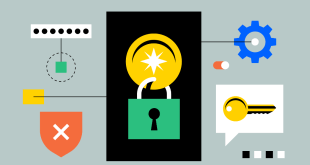In today’s hyperconnected world, where data is the lifeblood of businesses and individuals alike, safeguarding sensitive information has become paramount. The advent of 5G technology has opened up new horizons for data transmission, but it has also brought about new security challenges. In this comprehensive blog, we delve into the world of data encryption and its crucial role in ensuring safety and privacy in the 5G era. Join us as we explore the ins and outs of data encryption, how it works, and why it is vital in today’s digital landscape.
Understanding Data Encryption and Its Significance
Data encryption is the process of converting plain text into cipher text to protect it from unauthorized access during transmission or storage. It ensures that even if intercepted, the data remains indecipherable without the corresponding decryption key. In the context of the 5G era, where vast amounts of data are transmitted at unprecedented speeds, encryption plays a pivotal role in maintaining the confidentiality and integrity of sensitive information.
How Data Encryption Works in the 5G Infrastructure
In the 5G infrastructure, data encryption is a multi-layered process that involves various entities, including the user’s device, the network, and the destination server. When data is sent from a device, it is encrypted using advanced cryptographic algorithms before being transmitted over the network. At the receiving end, the data is decrypted using the appropriate decryption key. The encryption process is so efficient that it adds minimal latency, making it seamless for users while ensuring robust security.
The Role of Encryption in Securing 5G Networks
5G networks promise lightning-fast speeds and ultra-low latency, enabling real-time applications and IoT devices to thrive. However, the vast expansion of the attack surface in the 5G era demands a more proactive approach to security. Encryption not only protects data from eavesdropping and man-in-the-middle attacks but also prevents unauthorized access to critical infrastructure components, making 5G networks inherently more secure.
The Challenge of Quantum Computing and Encryption
While data encryption in the 5G era is strong and reliable, the rise of quantum computing poses a potential threat. Quantum computers have the capability to break traditional cryptographic algorithms, rendering current encryption methods vulnerable. To address this, researchers are exploring post-quantum cryptography, which utilizes quantum-resistant algorithms to safeguard data in the age of quantum computing.
Data Encryption and Data Privacy Regulations
As data breaches continue to make headlines, governments worldwide are enacting stringent data privacy regulations. Organizations that fail to implement adequate data protection measures, including encryption, may face hefty fines and reputational damage. Data encryption not only helps businesses comply with regulations like GDPR but also fosters trust among customers, who are increasingly concerned about their data privacy.
Best Practices for Implementing Data Encryption
Implementing data encryption effectively requires a strategic approach. Here are some best practices to ensure a robust encryption strategy:
Conduct a thorough data audit to identify sensitive information that requires encryption.
Use strong encryption algorithms and key management practices to enhance security.
Regularly update encryption protocols to stay ahead of emerging threats.
Train employees to follow encryption protocols and handle encryption keys securely.
Employ multi-factor authentication to add an extra layer of security to encrypted data.
Challenges and Limitations of Data Encryption
While data encryption is a powerful tool, it does come with some challenges and limitations. For instance:
Encryption can add processing overhead, affecting the performance of devices and networks.
Key management can be complex, especially for organizations dealing with vast amounts of data.
Encryption may not fully protect against certain attacks, such as insider threats or social engineering.
Balancing data security with accessibility for authorized users requires careful consideration.
Future Trends in Data Encryption
As technology continues to evolve, data encryption will evolve with it. Some future trends in data encryption include:
Homomorphic encryption, which allows computation on encrypted data without decryption.
Cloud-based encryption services that offer scalable and efficient encryption solutions.
Integration of hardware-based encryption to enhance data protection at the device level.
Final Words
In the 5G era, data encryption stands as the cornerstone of a secure and hyperconnected world. As cyber threats become more sophisticated, the importance of robust encryption cannot be overstated. Embracing encryption as an integral part of data protection strategies will not only safeguard sensitive information but also foster trust among users, clients, and partners.
Commonly Asked Questions
Q1: Is data encryption only necessary for sensitive information?
A1: While data encryption is vital for sensitive information, it is recommended to implement encryption for all data, as cyber threats can target any data type.
Q2: Can encrypted data be decrypted?
A2: Encrypted data can be decrypted with the corresponding decryption key, but strong encryption algorithms make it extremely challenging for unauthorized parties to do so.
Q3: Is encryption a one-size-fits-all solution?
A3: No, encryption strategies should be tailored to the specific needs and risks faced by each organization, taking into account factors like data volume and regulatory requirements.
Q4: Does encryption slow down data transmission?
A4: Modern encryption techniques have minimal impact on data transmission speed, ensuring a seamless user experience.
Q5: What is post-quantum cryptography, and why is it important?
A5: Post-quantum cryptography involves using quantum-resistant algorithms to safeguard data from potential threats posed by quantum computing, making it crucial for future-proof data protection.
 webfily
webfily



